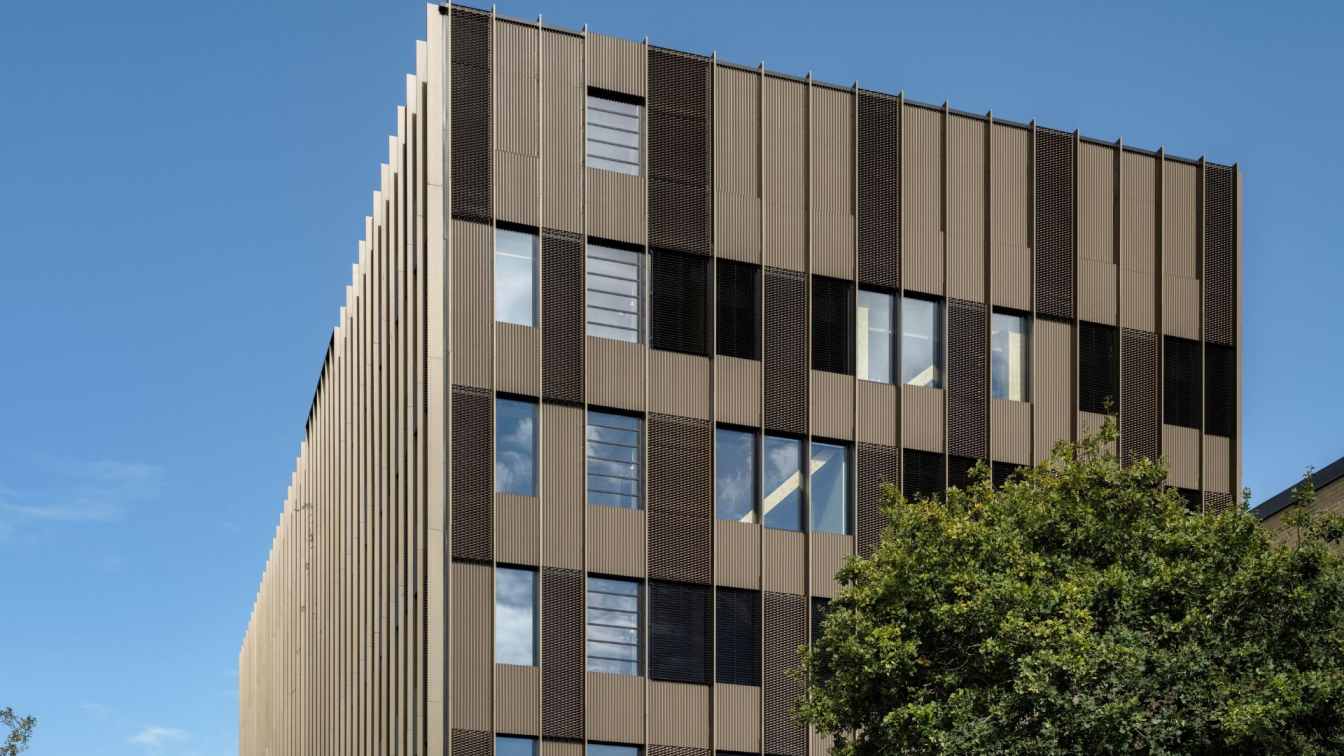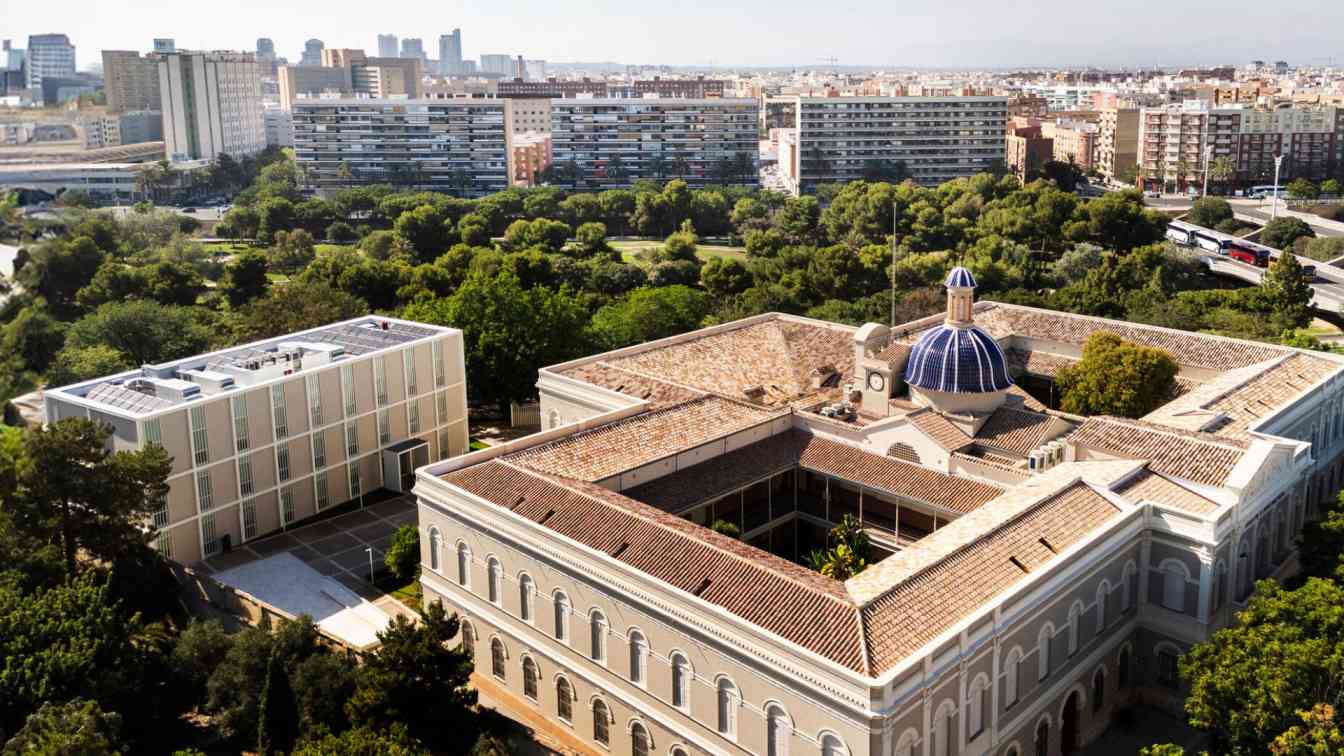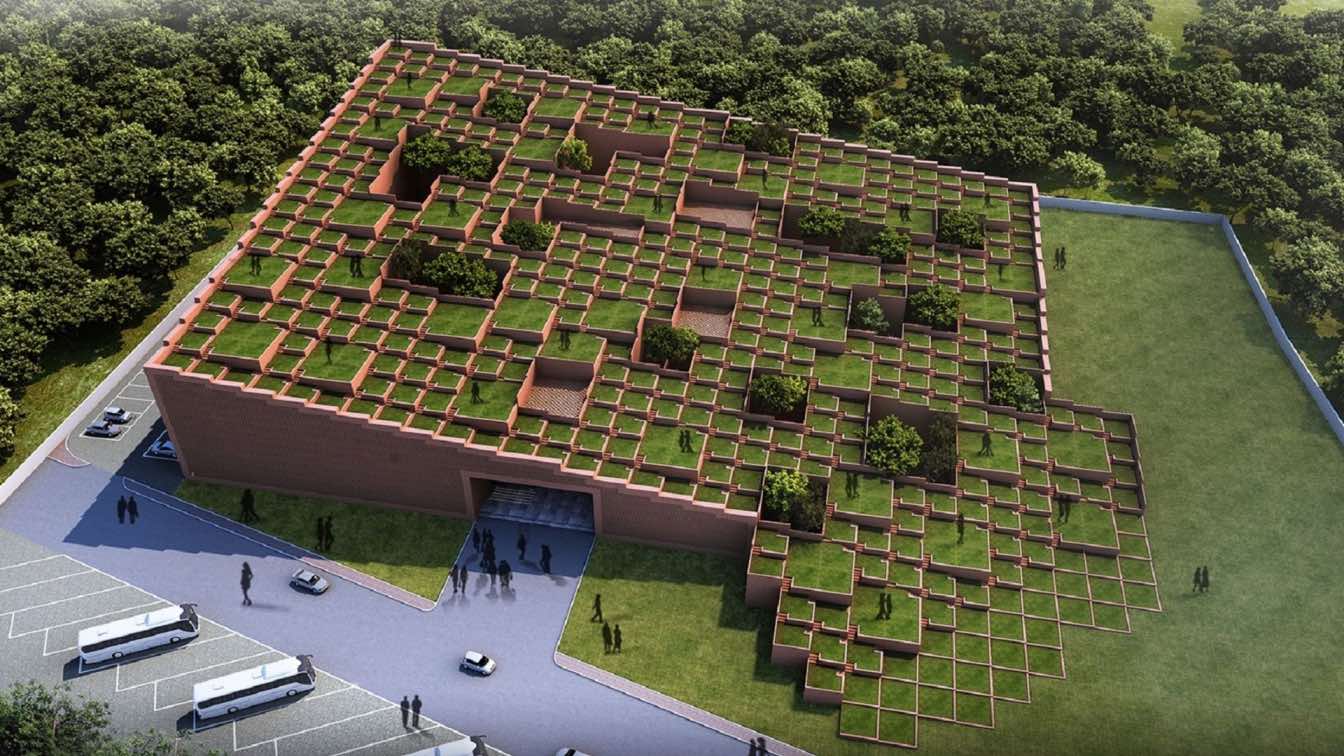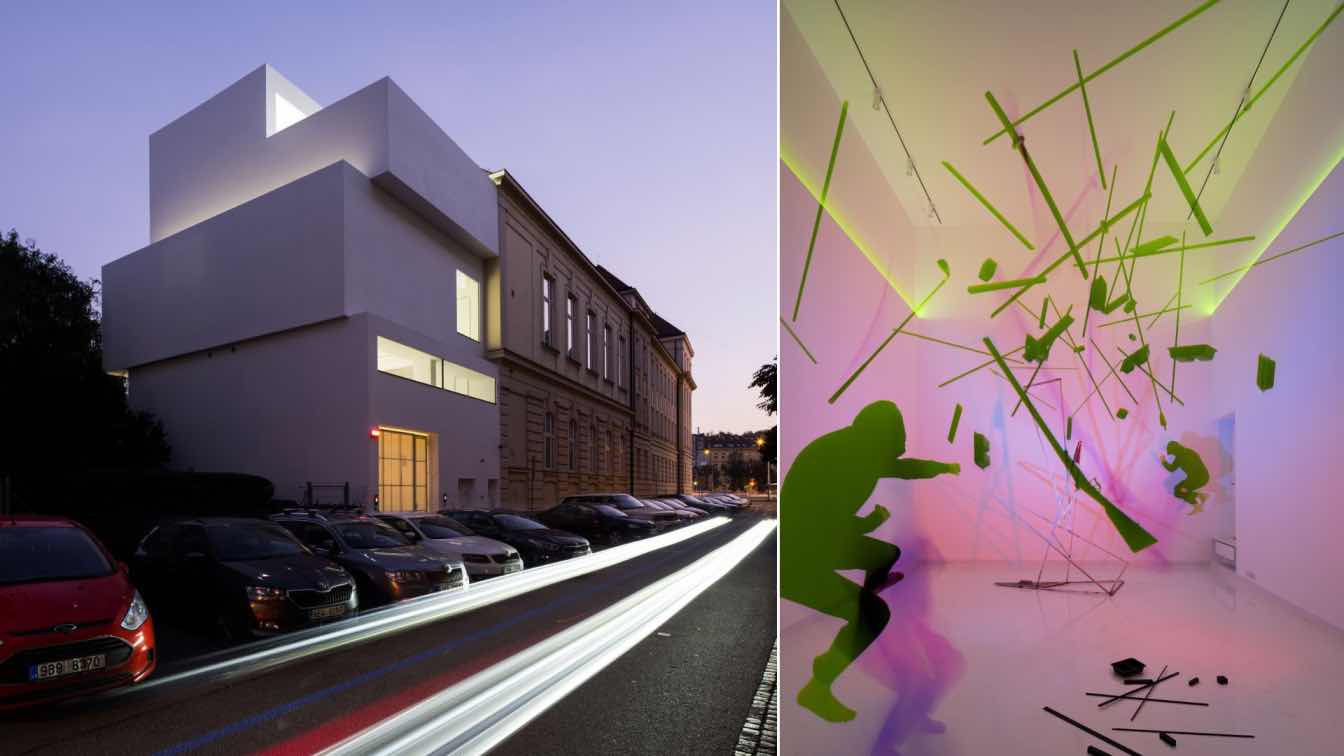Christensen & Co. Architects: Climate Challenge Laboratory B313 at the Technical University of Denmark is a cutting-edge research hub. The building’s architecture helps create a unique world-class research environment and supports innovation, knowledge exchange, and meetings between people while providing optimal facilities for ground-breaking research on climate change while minimizing environmental impact.
Timber Superstructure
In the entire office area of the climate laboratory, wood constitutes the foundation for the load-bearing structures, contributing to reducing the CO2 footprint. Its biodegradable nature makes it an environmentally friendly solution, and throughout its lifespan, wood has the potential to sequester more CO2 than it releases. Compared to other materials such as steel or concrete, the production of wood materials generally requires less energy, positioning B313 as a building that not only impresses aesthetically but also incorporates circular principles.
Flexible Laboratory Development
B313's laboratories and offices are designed for adaptability, allowing configurations to evolve with research needs. The facility includes specialized spaces like autoclave rooms for equipment sterilization and a catalog of laboratory typologies to tailor functionality.
Integration of Biodiversity
We have explored how existing biodiverse areas can be preserved and how new vegetation can support this. In the inner courtyard, a forest is staged. Like a diorama, researchers and students can enjoy looking out into a small forest, but they cannot step into it. The building’s outdoor landscape and inner courtyard feature 160 trees, 25 multi-stemmed, and 145 shrubs, transitioning from forests to marshlands during rainfall, and support biodiverse habitats. Rainwater management systems, such as permeable surfaces, ditches, and slow water flow facilitate infiltration. A green facade, with vegetation ranging from wetland plants to steppe-like flora, creates a living ecosystem while serving as a visual and functional part of the building.

Interdisciplinary Connection
To support close relationships between the disciplines, there is a strong connection between inside and outside the building. This creates the framework for an expanded use of the building, where users more often interact with each other. The lab facilities also strengthen collaboration across disciplines by being designed so that they can be used by researchers in many different fields. The lab environments are comfortable to stay in for hours at a time and support good collaboration patterns.
Inclusive Design Approach
The goal is to create an inclusive and user-friendly building. We identified “user types” and user needs through image registration from users, walk-throughs, and interviews. Concentrating on the senses—including touch, smell, hearing, vision, balance, muscle-joint sense, cognitive abilities, and mobility, we have translated the seven principles of universal design into widely recognized architectural elements, encompassing light, acoustics/sound, temperature, surfaces/materials, scents, and proportions.
Certification and Sustainability Goals
The building is DGNB Gold and Heart certified, and we have developed a biodiversity strategy. Based on the analysis of the building’s context, we have examined how we can preserve the current biodiverse areas and how the planting can support the growth of the existing species. Based on this analysis, we have chosen to give the building green areas on everything from the roof to the facade.

















